- News
- Reviews
- Bikes
- Components
- Bar tape & grips
- Bottom brackets
- Brake & gear cables
- Brake & STI levers
- Brake pads & spares
- Brakes
- Cassettes & freewheels
- Chains
- Chainsets & chainrings
- Derailleurs - front
- Derailleurs - rear
- Forks
- Gear levers & shifters
- Groupsets
- Handlebars & extensions
- Headsets
- Hubs
- Inner tubes
- Pedals
- Quick releases & skewers
- Saddles
- Seatposts
- Stems
- Wheels
- Tyres
- Tubeless valves
- Accessories
- Accessories - misc
- Computer mounts
- Bags
- Bar ends
- Bike bags & cases
- Bottle cages
- Bottles
- Cameras
- Car racks
- Child seats
- Computers
- Glasses
- GPS units
- Helmets
- Lights - front
- Lights - rear
- Lights - sets
- Locks
- Mirrors
- Mudguards
- Racks
- Pumps & CO2 inflators
- Puncture kits
- Reflectives
- Smart watches
- Stands and racks
- Trailers
- Clothing
- Health, fitness and nutrition
- Tools and workshop
- Miscellaneous
- Buyers Guides
- Features
- Forum
- Recommends
- Podcast
review
£39.99
VERDICT:
Well-made, smart looking post, but anti-shock tech is unlikely to be felt by either road or gravel riders
Durable
Affordable
No data/research available on anti-shock tech
Damping effect small to the point of undetectable
Weight:
314g
Contact:
At road.cc every product is thoroughly tested for as long as it takes to get a proper insight into how well it works. Our reviewers are experienced cyclists that we trust to be objective. While we strive to ensure that opinions expressed are backed up by facts, reviews are by their nature an informed opinion, not a definitive verdict. We don't intentionally try to break anything (except locks) but we do try to look for weak points in any design. The overall score is not just an average of the other scores: it reflects both a product's function and value – with value determined by how a product compares with items of similar spec, quality, and price.
What the road.cc scores meanGood scores are more common than bad, because fortunately good products are more common than bad.
- Exceptional
- Excellent
- Very Good
- Good
- Quite good
- Average
- Not so good
- Poor
- Bad
- Appalling
Prime's Kanza Inline Gravel Seatpost is a durable, affordable alloy option for both road and gravel bikes. The clamp makes adjustments really easy, but the claimed anti-shock effects are questionable – personally I couldn't detect any difference between this and a regular aluminium post. Nevertheless, it's still decent value and otherwise effective.
The Kanza is available in either a 27.2mm diameter or 31.6mm, and a single 350mm length. Some might consider the lack of a 30.9 a bit disappointing. Even with the weight-saving, elliptical cross-section it tips the scales at 314g, which is slightly heavier than both Zipp's Service Course (290g) and Ritchey's Classic Two Bolt at 260g.
The forged alloy is a decent grade, namely 2014-T6 – the same as the Ritchey uses – while the all-black design and subtle logos make for a good look on any bike. It looks more expensive than it actually is.
For me, the best feature is the simple adjustment. Two 5mm bolts adjust the fore-aft position and the tilt, and with one bolt on the underside and one on the right, they are really easy to access. For the position-obsessed riders out there, it's a good system.
On the downside, there are no height alignment marks on the post itself... a negative for the position obsessed, then.
Shock and... awww
Prime doesn't feature this post on its website and the stockists (Prime is a Wiggle/CRC brand) don't publish any meaningful details about the anti-shock technology.
Taking the post apart reveals this tech comes in the form of a rubber bush in the clamp. More technically, it's an isolastic decoupling system – nothing groundbreaking, then, given that Norton used a similar thing to dampen vibes in the 1960s.
Once I'd extracted the central element I clamped its inner section in a vice and, using adjustable grips, attempted to rotate the outer to get a feel for how compliant the rubber is. With a hell of a lot of force I was able to see something like the claimed four degrees of movement. So yes, the anti-shock technology is completely legit.
Bad vibes
However, out in the real world I couldn't feel any benefit since any residual vibrations not dampened by my tyres, wheels, frame and even the saddle and its rails don't seem to be of significant magnitude to activate the rubber bush.
For the record, I tried this on a gravel bike with 47mm 650b tyres at 40-50psi, and on my road bike with 36mm tyres at 60psi. Both are tubeless.
> 9 best shock-absorbing seatposts — get comfier by reducing road shock
If anyone out there has one of these posts, is running skinny tyres at a much higher pressure, and is significantly heavier than an average rider, I'd be keen to hear your thoughts.
With a de-coupling system like this there is also a theoretical possibility of loss of power. Given the effort necessary to activate it at all, I'd say any losses are miniscule.
Value
In short, if you're looking to tangibly boost your comfort levels you could better invest in some wider tyres and run them at lower pressures – or perhaps just get an accurate, digital pressure gauge such as the Topeak Smart Gauge D2. Many track pumps won't register an accurate pressure.
At £40 the Kanza is a reasonable price for a well-made alloy post, even ignoring the shock absorption idea. Zipp's Service Course Seatpost is £50, for instance, with no extra tech to offer.
If you simply want a no-frills, inline post though, something like the Brand-X Inline 6061 is just £16.99.
Conclusion
The Prime Kanza Inline Seatpost would make a decent addition to a self-build road/touring project. While I personally didn't feel the benefit of the anti-shock technology, it clearly exists. Put this aspect to one side, though, and you are still getting a robust, smart looking, well-engineered seatpost for your money.
Verdict
Well-made, smart looking post, but anti-shock tech is unlikely to be felt by either road or gravel riders
road.cc test report
Make and model: Prime Kanza Gravel Seatpost
Size tested: 27.2mm x 350mm
Tell us what the product is for and who it's aimed at. What do the manufacturers say about it? How does that compare to your own feelings about it?
Prime says: 'Take the road less travelled with the Kanza Gravel Seatpost. With our innovative new seatpost you'll experience unrivalled comfort as you embark on your next biking adventure.'
'Featuring antishock technology, the Prime Kanza Gravel seatpost reduces numbness and fatigue of the waist, buttocks and knees, meaning you'll be able to ride for longer, even on mixed terrain.'
Tell us some more about the technical aspects of the product?
Material: 2014-T6 Alloy
Antishock technology reduces numbness and fatigue of waist, buttocks and knees
27.2 or 31.6mm diameter
350mm long
Offset: 6mm (27.2), 10mm (31.6)
Weight: 310g (27.2), 336g (31.6)
Road: Yes
MTB: Yes
Rate the product for quality of construction:
9/10
Solidly made.
Rate the product for performance:
6/10
It holds your saddle firmly in place, but I found the 'anti-shock technology' essentially undetectable.
Rate the product for durability:
7/10
The post and clamp are solidly made, though the surface seems easily marked by clamping.
Rate the product for weight (if applicable)
7/10
Reasonable for the price and materials.
Rate the product for comfort (if applicable)
6/10
No more comfortable than any other alloy seat post, in my opinion.
Rate the product for value:
5/10
It's a durable and practical seat post, but I found it no more comfortable than any other alloy post on gravel.
Tell us how the product performed overall when used for its designed purpose
It's easy to install and adjust, but doesn't offer any anti-shock benefits on either gravel or tarmac that I can discern.
Tell us what you particularly liked about the product
Easy saddle mounting and adjustment.
Tell us what you particularly disliked about the product
If the anti-shock works, I can't feel it.
How does the price compare to that of similar products in the market, including ones recently tested on road.cc?
At £40 it's a reasonable price for a well-made alloy post, even ignoring the potential shock absorption. Zipp's Service Course Seatpost is £50, for instance, with no extra tech to offer.
If you simply want a no-frills, inline seatpost though, something like the Brand-X 6061 is just £16.99.
Did you enjoy using the product? Yes
Would you consider buying the product? Yes
Would you recommend the product to a friend? Yes
Use this box to explain your overall score
Durable, easy to mount and adjust a saddle but nothing in the way of anti-shock effects to note when riding gravel, which is what it's being marketed for.
About the tester
Age: 39
I usually ride: Road My best bike is: Carbon road.
I've been riding for: Over 20 years I ride: Most days I would class myself as: Expert
I regularly do the following types of riding: commuting, touring, club rides, general fitness riding, Getting to grips with off roading too!
Emma’s first encounters with a road bike were in between swimming and running. Soon after competing for GB in the World Age Group Triathlon Championships in Edmonton in 2001 she saw the light and decided to focus on cycling.
After a couple of half decent UK road seasons racing for Leisure Lakes, she went out to Belgium to sample the racing there and spent two years with Lotto-Belisol Ladies team, racing alongside the likes of Sara Carrigan, Grace Verbeke, Rochelle Gilmore and Lizzie Deignan. Emma moved from Lotto-Belisol to Dutch team Redsun, then a new Belgian team of primarily developing riders, where there was less pressure, an opportunity to share her experience and help build a whole new team; a nice way to spend her final years of professional racing.
Since retiring Emma has returned to teaching. When not coercing kids to do maths, she is invariably out on two wheels. In addition to the daily commute, Emma still enjoys getting out on her road bike and having her legs ripped off on the local club rides and chain gangs. She has also developed an addiction to touring, with destinations including Iceland, Georgia and Albania, to mention just a few. There have also been rare sightings of Emma off-road on a mountain bike…
Latest Comments
- ColinWatters 42 min 15 sec ago
As I recall the power transmitted by a pulley or chain drive depends on the difference in tension between the two sides of the chain or belt....
- mctrials23 53 min 37 sec ago
"As a cyclist myself..."...
- chrisonabike 56 min 15 sec ago
Well, you could get a rusty omafiets (would you be happy for it to weight slightly more than double, assuming you've a fairly heavy road bike)? Or...
- chrisonabike 1 hour 3 min ago
Well, law isn't engineering......
- jaymack 1 hour 40 min ago
We must be related!
- The_Ewan 3 hours 10 min ago
But why worry if a few people do? It's just not a big deal....
- Tom_77 4 hours 14 min ago
Tempted to get him a sweary birthday cake like in The Thick Of It....
- Bigtwin 4 hours 42 min ago
Didn't happen did it? They came into my shop a couple of years back and said it was "on the way", but never heard anything more.
- Steve K 5 hours 15 min ago
Very parochially, I've still not forgiven Pearson's for abandoning their roots by leaving Sutton.
- Gd29 5 hours 23 min ago
Warner Bros makes 8 year term agreement... withdraws after 4 taking the whole thing down....








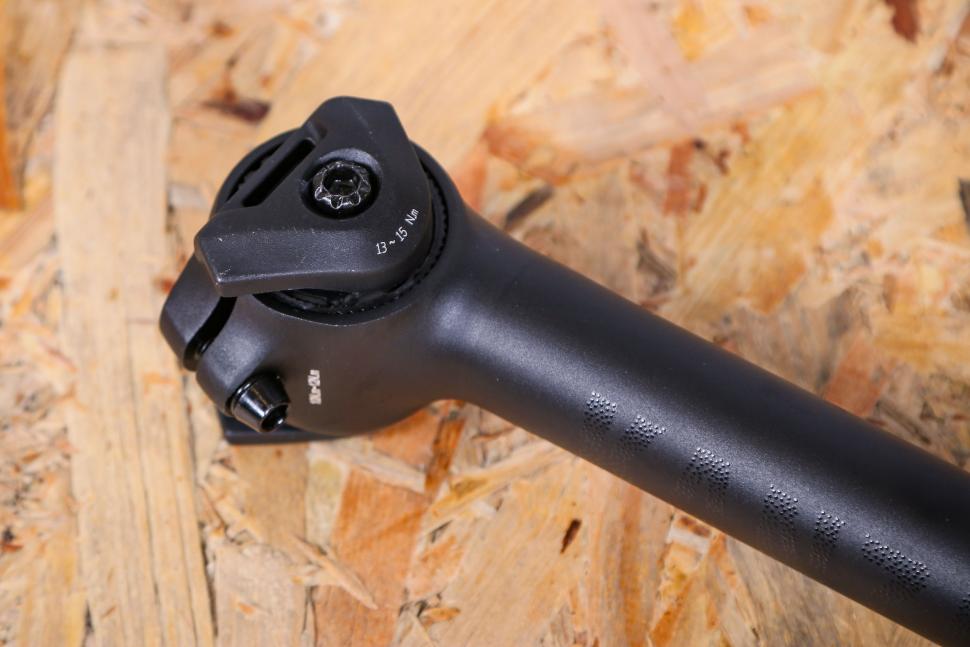
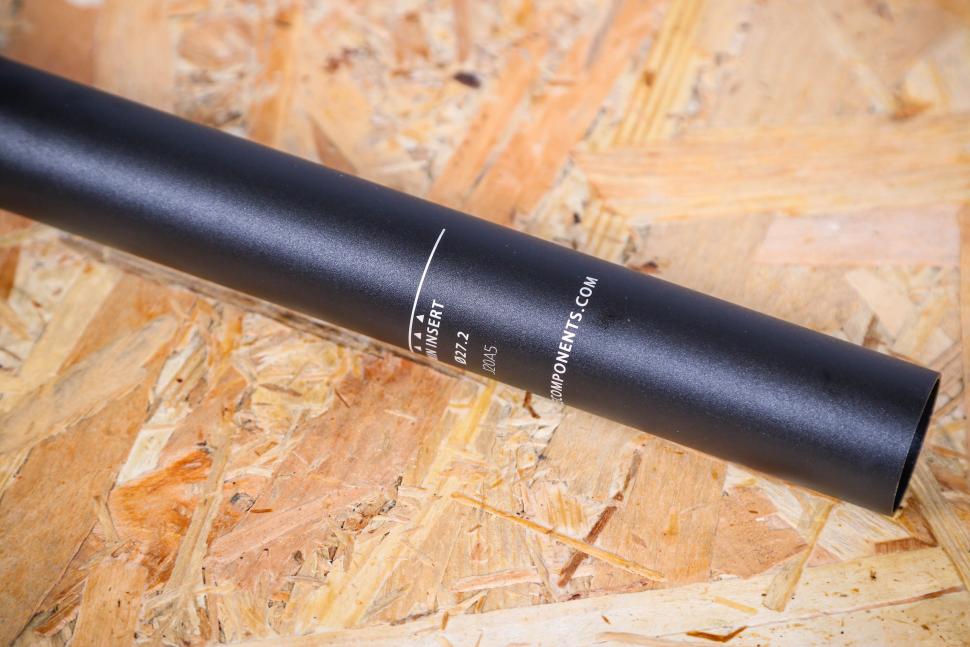

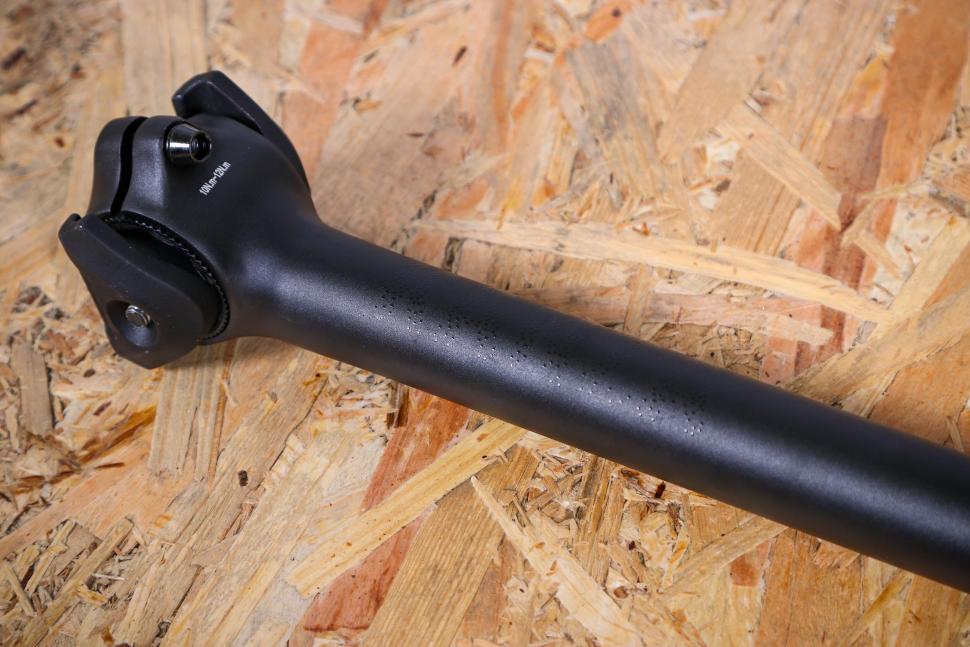
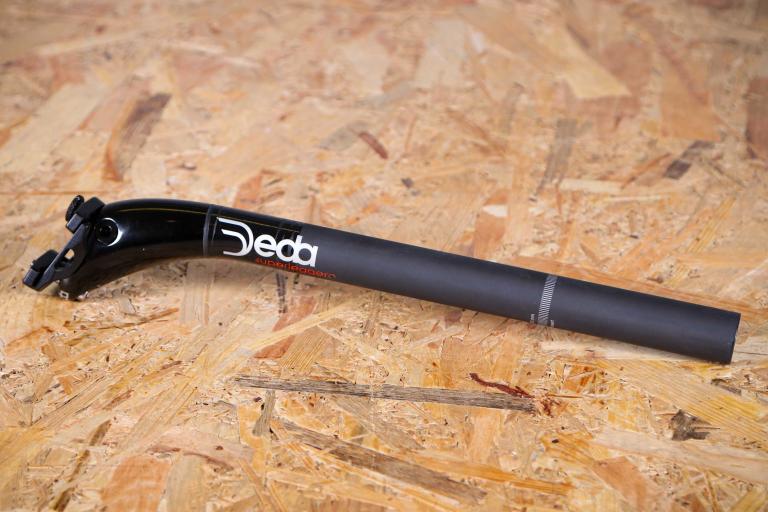
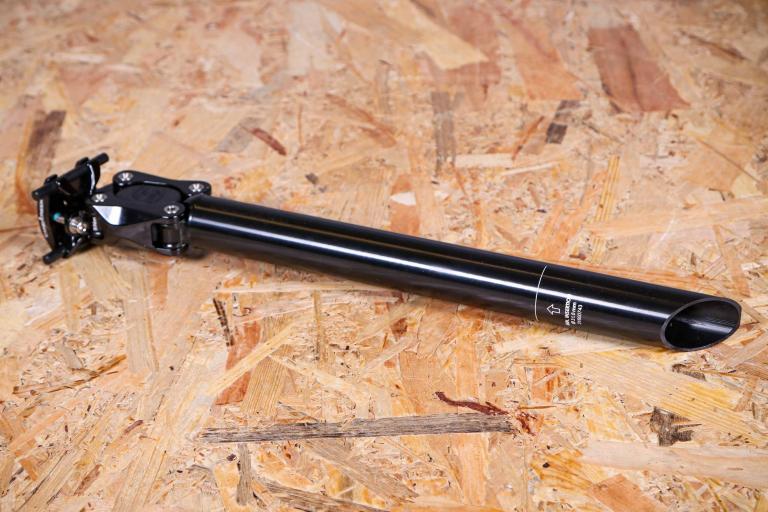
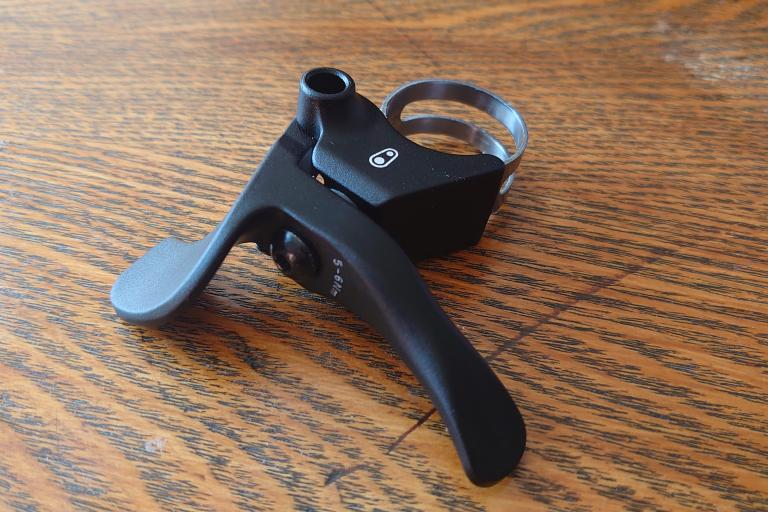

Add new comment
3 comments
I got one of these for my gravel bike at the back end of last year. Being winter I haven't put loads of miles down rough trails on it yet, but my first impressions were very much the opposite! Pleasantly surprised by the perceived improvement in comfort over a few of my regular loops, I felt it noticeably took the sting out of some of the more rattly gravel sections. 80kg, not sure if that makes me significantly heavier than average, but run 45mm tyres at around 35psi and still thought the post was a noticeable improvement.
Interesting that you perceived improvement. I am perhaps a lightweight at less than 65kg, it would be interesting if anyone else out there, closer to your weight has one and has sensed the effects of the damping. As I said in the review, the technology is undeniably there.
That clamp mechanism looks like almost the perfect solution to a different problem - those of us who sit squint!
I would really like to be able to position my saddle 5mm to the left, and I've read articles from seasoned bike fitters (Steve Hogg) who say it would be a useful adjustment to have...